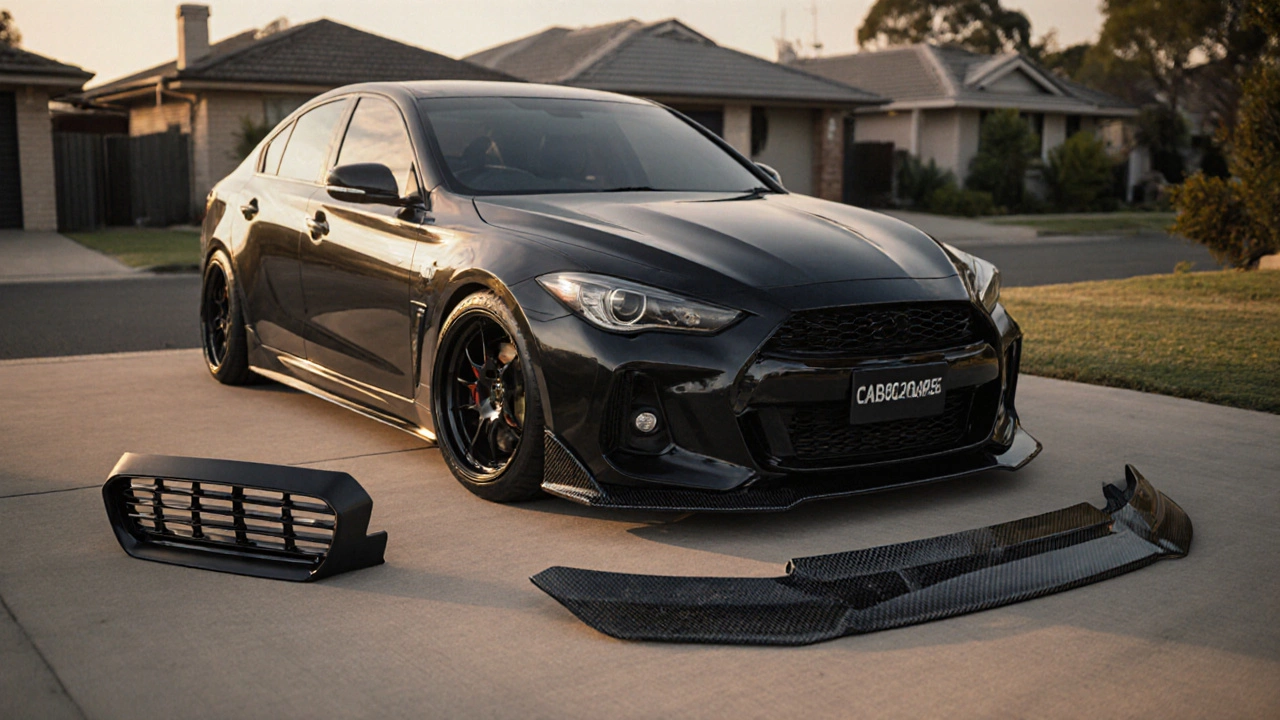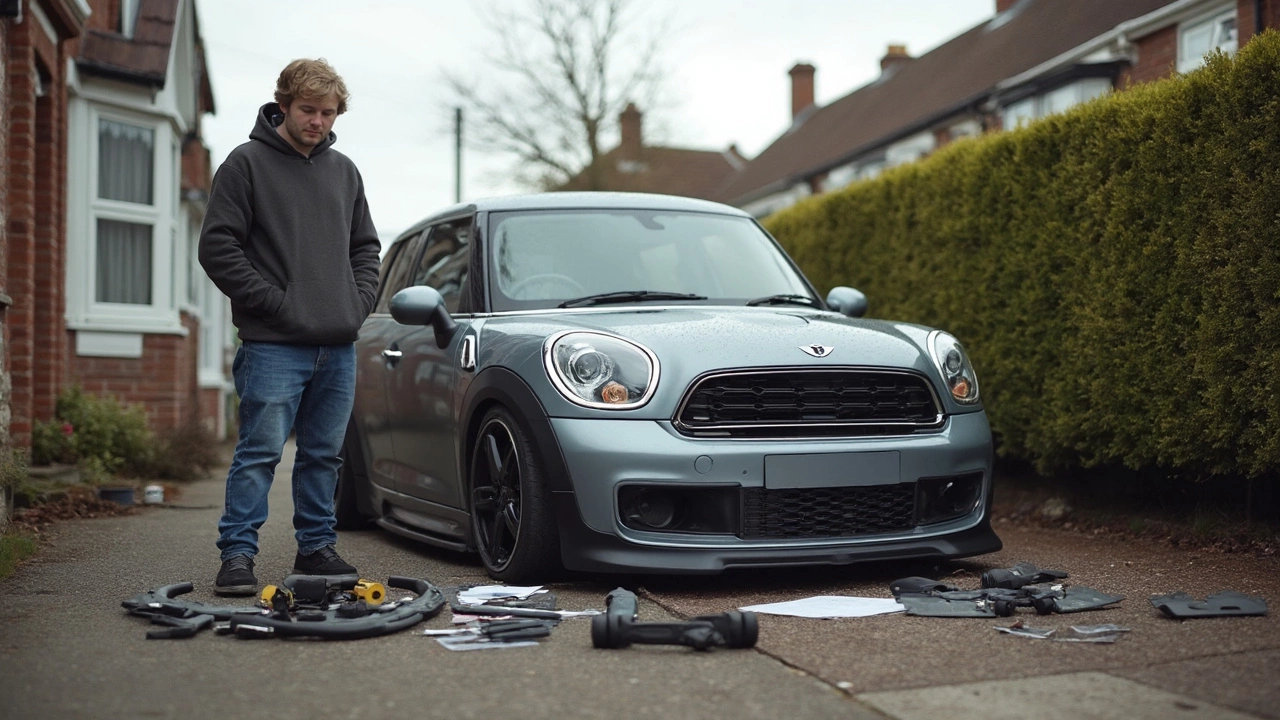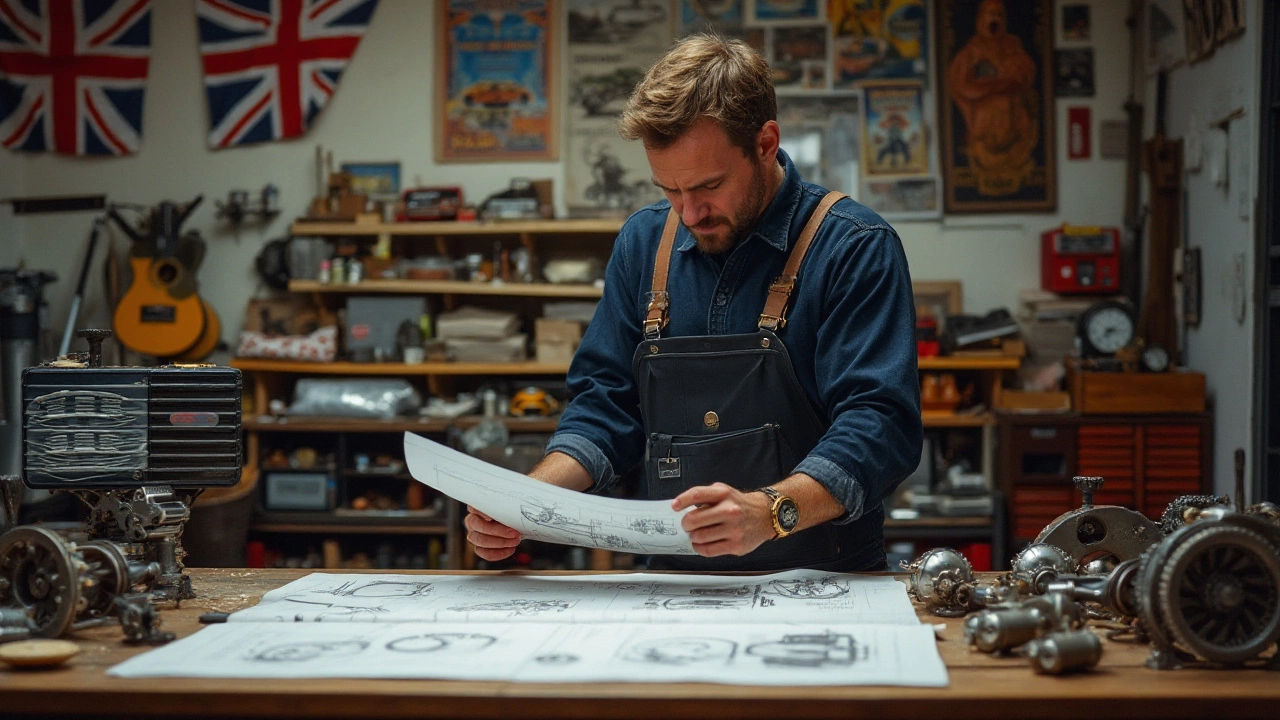Car Body Kits: Boost Style, Fit & Function
Thinking about a body kit? You probably want a sharper look, a little extra downforce, and maybe a boost in resale value. The good news is you don’t need a garage full of tools or a PhD in aerodynamics to get there. In this guide we’ll break down the basics—what to look for, how to fit it, and what the insurance folks will ask you.
Choosing the Right Kit for Your Ride
First off, decide what you actually want. Are you after a subtle lip spoiler, a full front splitter, or a whole set that changes the car’s silhouette? Most kits are made from three materials: ABS plastic, fiberglass, or carbon fiber. ABS is cheap and easy to paint, fiberglass looks great but can crack, and carbon fiber is light and strong but pricey.
Fitment is the next big thing. A kit that’s designed for your exact make and model will bolt on with minimal drilling. Generic kits may require custom brackets or extra work, which adds time and risk. Check the manufacturer’s fit guide and read user reviews – they often mention whether the kit lines up with stock mounting points.
Cost can swing wildly. A basic front bumper lip can be under £100, while a full carbon‑fiber set may push £1,500. Keep your budget realistic and factor in paint, hardware, and possibly professional installation. If you’re a DIY fan, make sure the kit comes with clear instructions and all necessary bolts or clips.
Legal and Insurance Considerations
Before you start drilling, check your local vehicle regulations. In many areas, a body kit must not alter the car’s dimensions beyond a certain limit, and it can’t obstruct lights or license plates. The post “Car Body Kit and Insurance” points out that insurers often view modifications as a higher risk, which can raise premiums.
To stay covered, notify your insurer about the new parts – give them the make, model, and cost. Some policies require an inspection. If you skip this step, you could end up with a denied claim after an accident. A quick call can save headaches later.
Safety is another angle. Poorly installed kits can affect aerodynamics, causing lift at high speeds, or they can weaken if the mounting points aren’t reinforced properly. Use a torque wrench, follow the torque specs, and double‑check that all bolts are snug. If you’re unsure, a half‑hour at a professional shop is worth the peace of mind.
Finally, think about maintenance. Body kits attract bugs, road grime, and stone chips. A regular wash with a gentle car shampoo, followed by a quick wax, will keep the finish looking fresh. For carbon fiber, avoid harsh chemicals – a simple water rinse works fine.
Bottom line: a well‑chosen, correctly installed body kit can transform your ride without breaking the bank or your insurance. Do your research, match the kit to your car, keep the paperwork straight, and enjoy the new look on the road.

Can I Modify My Car Body? A Practical Guide to Body Kits, Legal Limits & DIY Tips
Learn if you can legally modify your car body, what parts to choose, DIY steps, costs, and how to stay road‑worthy with a clear checklist and FAQs.

How Long Does It Take to Fit a Body Kit?
Wondering how long it really takes to fit a body kit? This article breaks down the time factors for different styles and car models, explains what can speed up or slow down your installation, and throws in some tips so you don’t run into common surprises. Whether you’re hitting the driveway yourself or dropping your car off at a shop, you’ll get a realistic feel for what to expect. If you’re thinking about that fresh new look, this is all you need to know before you start tearing off panels.

How Much Does a Good Body Kit Cost? Real Numbers Without the Hype
Looking for a good body kit and wondering about the cost? This article breaks down what you can expect to pay for quality body kits, from basic lip kits to full widebody setups. You'll get clear price ranges, real-world examples, and tips on getting the best bang for your buck. We'll cover hidden costs, materials, and what really makes a difference when it comes to buying a kit for your ride. No sales pitch—just straightforward answers.

Full Body Kits for Cars: Transform Your Ride's Look
A full body kit for a car is a set of exterior modifications designed to enhance the vehicle's appearance and aerodynamics. These kits typically include bumpers, side skirts, and spoilers, allowing car enthusiasts to customize their ride's look and improve performance. Understanding what a full body kit entails and choosing the right style and material can significantly impact both aesthetics and functionality. Explore the benefits and considerations of installing a full body kit for a sleek, personalized upgrade.

Understanding the Time Investment for Building a Kit Car
Building a kit car is both an exciting and intricate venture, requiring significant time to complete depending on the complexity and the builder's experience. Factors such as the type of kit, personal skills, available tools, and dedication influence the overall duration. From mere months to a couple of years, each stage, from planning to assembly, plays a critical role in the project timeline. Embracing patience and learning along the way enhances the rewarding experience of creating a custom vehicle.